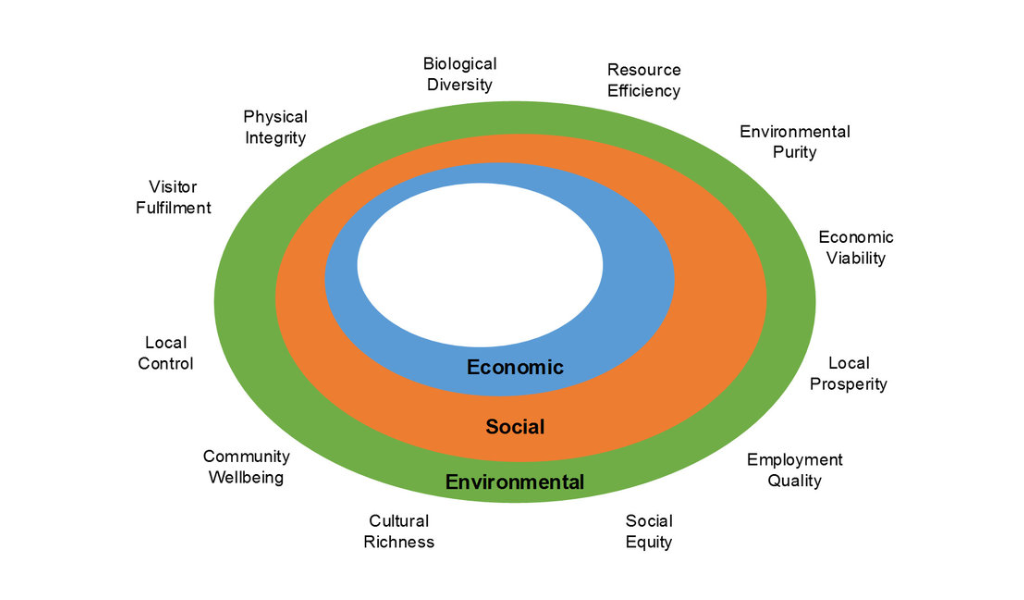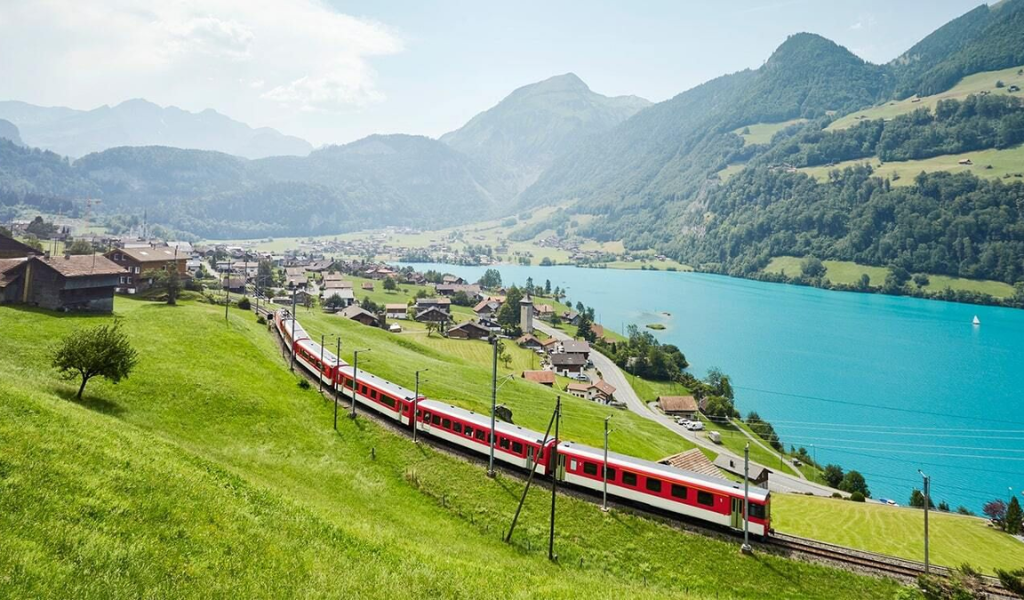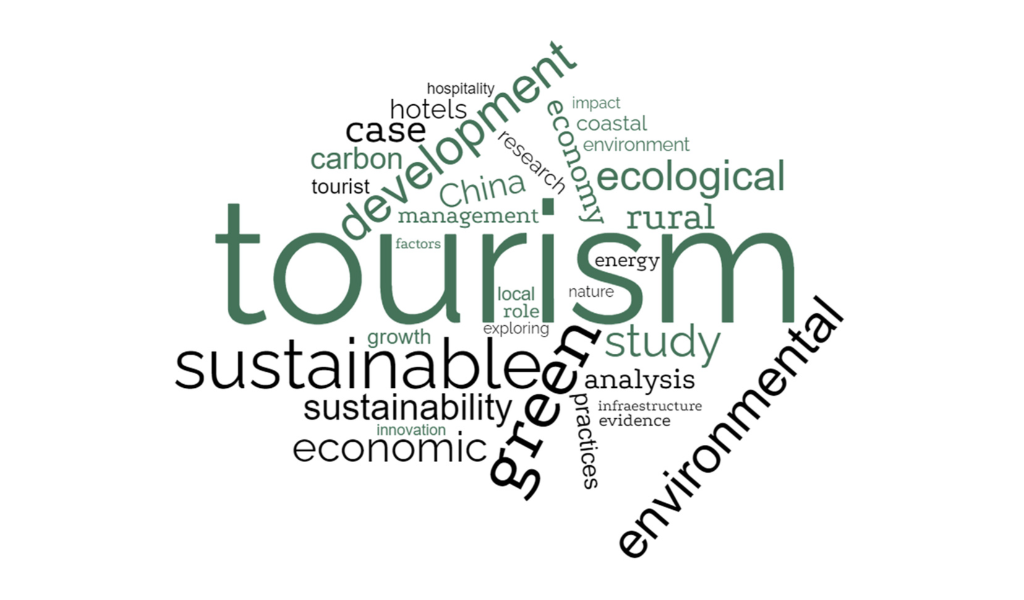More than a business activity, sustainable tourism is also a social responsibility and a moral duty. This article will discuss 10 principles of sustainable tourism and its dimensions. It’s time to change – we should relish the world’s wonders while ensuring these treasures remain intact for future generations.
Before we get started, here is one thing you should know: Sustainable tourism is a concept that aims to balance the demands and interests of tourists, host communities, and the natural and cultural resources that support them.
Sustainable Tourism Development
According to the World Commission on Environment and Development (The Brundtland Commission), “Sustainable development is the development that meets the needs of the present without compromising the ability of future generations to meet their own needs.”
This term is a way of saying that we, the current generation, have this environment with land, water, and air. When we leave it to the next generation, we should ensure it’s in at least the same condition as when we got it, if not better.

Tourism used to be seen as a fast way to make money with no limits to how much it could grow. People enjoy it but forget to follow the rules to protect the environment. Businesses only care about the profit, and they only change if they have to or if it helps them make more money.
As there are many economic, social, ecological, and political limits to tourism development, principles for sustainable tourism are crucial to solving these problems.
Sustainable tourism strives to minimize the negative impacts and maximize the positive benefits of tourism for all stakeholders involved.
10 Principles of Sustainable Tourism
In 1991, Tourism Concern, in partnership with the Worldwide Fund for Nature (WWF), laid out 10 critical principles that guide sustainable tourism development and practice. Here they are:
- Use resources sustainably: Taking care of nature, local communities, and their culture while doing tourism is vital. Developing sustainable destinations, such as the Amazon, Costa Rica, and more, is not only good for the environment but also for the long-term success of tourism.
- Reduce over-consumption and waste: Avoid using too much or throwing things away. It is the first step to reducing the costs of restoring environmental damage and improving the world tourism quality.
- Protect biodiversity: We should maintain and promote natural, social, and cultural diversity in different approaches. It will benefit the long-term tourism health and create a strong foundation for the industry.
- Incorporate Tourism into Planning: Tourism development should be part of broader national and local strategic plans. Also, it should include assessments of its environmental impact.
- Support local businesses: Tourism should benefit various local economic activities while considering environmental impact and costs. This principle focuses on local economic development while preventing harm to the surroundings.
- Engage Local Communities: Let the people who live in tourist places be part of the tourism. Involving local communities not only benefits them and the environment but also enhances the quality of the tourism experience.
- Seek Input from Stakeholders and the Public: Open communication and collaboration between the tourism industry, local communities, and organizations are vital to resolving conflicts and addressing shared interests.
- Train the staff: Teach the people who work in tourism how to do it in a way that’s good for the environment and the tourists. Also, recruiting qualified personnel at all levels to improve the tourism experience.
- Responsible tourism marketing: Marketing responsibly means giving tourists accurate and ethical information and promoting respect for the natural, social, and cultural environments. That’s how we increase customer satisfaction.
- Learn from research: Ongoing research and monitoring by the industry, using effective data collection and analysis, are essential for problem-solving and bringing benefits to destinations, the industry, and travelers.
Dimensions of Sustainable Tourism

As discussed, tourism affects the environment, the economy, and society. And we must understand that these three tourism factors are connected – what happens in one area can affect the others.
Therefore, we can analyze sustainable tourism from environmental, economic, and social dimensions.
Environmental Dimension
For many people, when talking about sustainability, they’re mainly thinking about protecting the natural environment.
But the environment isn’t just about nature; it includes more aspects, including natural resources, natural environment, farmed environment, wildlife, and built environment.
Economic Dimension

The economic side of sustainable tourism deals with how money is earned and shared through tourism. Overall, our main goal is boosting economic growth, expanding economic variety, and raising living standards.
We can measure how well the economy is doing in tourism by looking at GDP, job creation, balance of payments from tourism, tourism competition, etc.
Social Dimension
The social side of sustainable tourism doesn’t get as much attention in the talk about sustainable tourism as the environment does. That’s because the socio-cultural impacts of tourism happen slowly over time in an unspectacular way.
The social influence of tourism is usually permanent, with little or no chance to reverse the changes once it has occurred. When talking about how sustainable tourism affects society, we typically focus on the community hosting the tourists.

Whether the social changes from tourism are positive or negative depends on different things:
- How strong and together the local society and culture are.
- The nature of tourism in the tourist destination.
- How well-off the local people are compared to the tourists.
- What the government is doing to manage tourism and ensure it doesn’t hurt the people and culture of the place.
See more: World Tourism Day 2023
Final Thoughts
The 10 principles of sustainable tourism we’ve discussed are the guide for a better future in tourism. They help us make sure that the development of sustainable tourism doesn’t harm nature, local communities, or cultures.
By following these principles, we are on our path to giving the next generations an enjoyable and enriching world. Remember, sustainable tourism is not just a concept; it’s a responsibility we all have to create a world we’re proud to pass on to the generations after us.









